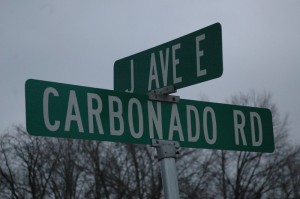Carbonado Road Set For More Public Discussion
Oskaloosa, Iowa – Sometimes one thing leads to another, and the current discussion over sanitary sewers and septic systems is just one example of those incidents.
Tuesday night, residents along Carbonado Road will be meeting with Mahaska County Sanitarian Eric Dursky over the future of how sewage is handled. “Tomorrow night is really just informational, I want the residents to have the facts”, Dursky said about the upcoming meeting that is scheduled to start at 6:00 pm at the Mahaska County Secondary Roads facility on the west side of Oskaloosa.
Dursky will have a company there to demonstrate a textile filter system. “It’s the smallest footprint septic system that’s out there”. This will also give residents a better idea to cost involved along with maintenance.
The discussion started in April of 2011, but was a product of the time of transfer law that was implemented in July of 2009. Dursky describes the law as “any house being sold with a private sewer system septic tank has to be inspected by a licensed time of transfer agent from the state.” The size and capacity of the septic tank and what the secondary treatment is if any at all is in use.
Dursky points towards a home that was for sale and was using a septic tank that needed to be updated, “because it was not compliant.” When repairs were being made, Dursky was informed by the homeowner that his neighbors system was the same way. “Well then at that point, I have knowledge of an illegal septic system, so I have to go and inspect it and find out what’s theirs, and at that point, obviously the chain reaction started and everybody started pointing fingers at the other neighbors. Since I was aware, all those houses on Carbonado Road pretty much, except for a few, will have septic tanks.”
From there, Dursky sent out a “blanket letter” to the residents on Carbonado Road to find out what systems the homeowners did have, so it could be discovered if the system was legal or not. There are 41 homes along Carbonado, including the Ruby Addition.
Carbonado Road resides within the city limits of Oskaloosa but does not have city sewer service. The last part of Carbonado was annexed into the city back in 1963, with portions nearest Oskaloosa having been part of Oskaloosa prior to 1963. With the lack of the sanitary sewer system provided by the city, septic tanks have been used, putting those under the jurisdiction of Dursky, who works for Mahaska County.
Dursky presented to the city and residents the idea of providing the residents access to the cities sewer system. “They deserve to have the same municipals as everybody else in town that pays that same tax base.”
The City of Oskaloosa has then stepped forward and given costs of what it could potentially cost the residents along Carbonado to be connected to the city sanitary sewer system. In minutes from earlier meetings, it was outlined that adding a sanitary sewer system “does not mean the city extends those services for free” and “Services are ready to be extended, but a percentage of costs will be borne by property owners”.
The city points towards, “Historically private development such as residential homes have been required to install infrastructure” and that “This is traditional language used in annexation petitions by cities/towns”.
In the resolution dated October 3, 1963 from the City of Oskaloosa it states, “RESOLUTION WHEREAS, the City of Oskaloosa, Iowa, is capable of extending substantial municipal services and benefits not heretofore enjoyed by the territory hereinafter described; and WHEREAS, the annexation of said territory would promote the growth and provide for the expansion of the City of Oskaloosa, Iowa:”
Preliminary project estimates put the cost for a sanitary sewer system at $850,000, but directional boring could help keep costs down; according to Dursky.
“As far as our stance from Public Health, we honestly are not sided. Long term best solution for the residents along Carbonado Road, long-term would be to put a sanitary sewer in; best case. If the city and residents out there don’t want sanitary sewer, that’s fine.”
Dursky said the Department of Natural Resources also believes the better choice would be the sanitary sewer system.
“But if that’s not a choice the city and the residents out there choose, well that’s where we step back in and say ‘OK, let’s figure out what you guys have for lots and your soil types’, cause every house will be different. Some people have big lots, some people have small lots. Some people might have great soil, some might not. So each house will be different.”
Septic system costs could be $5,500.00 to $15,000.00 for a textile system, with those costs being determined by the size of the lot, the type of soil, along with the type of system.
















